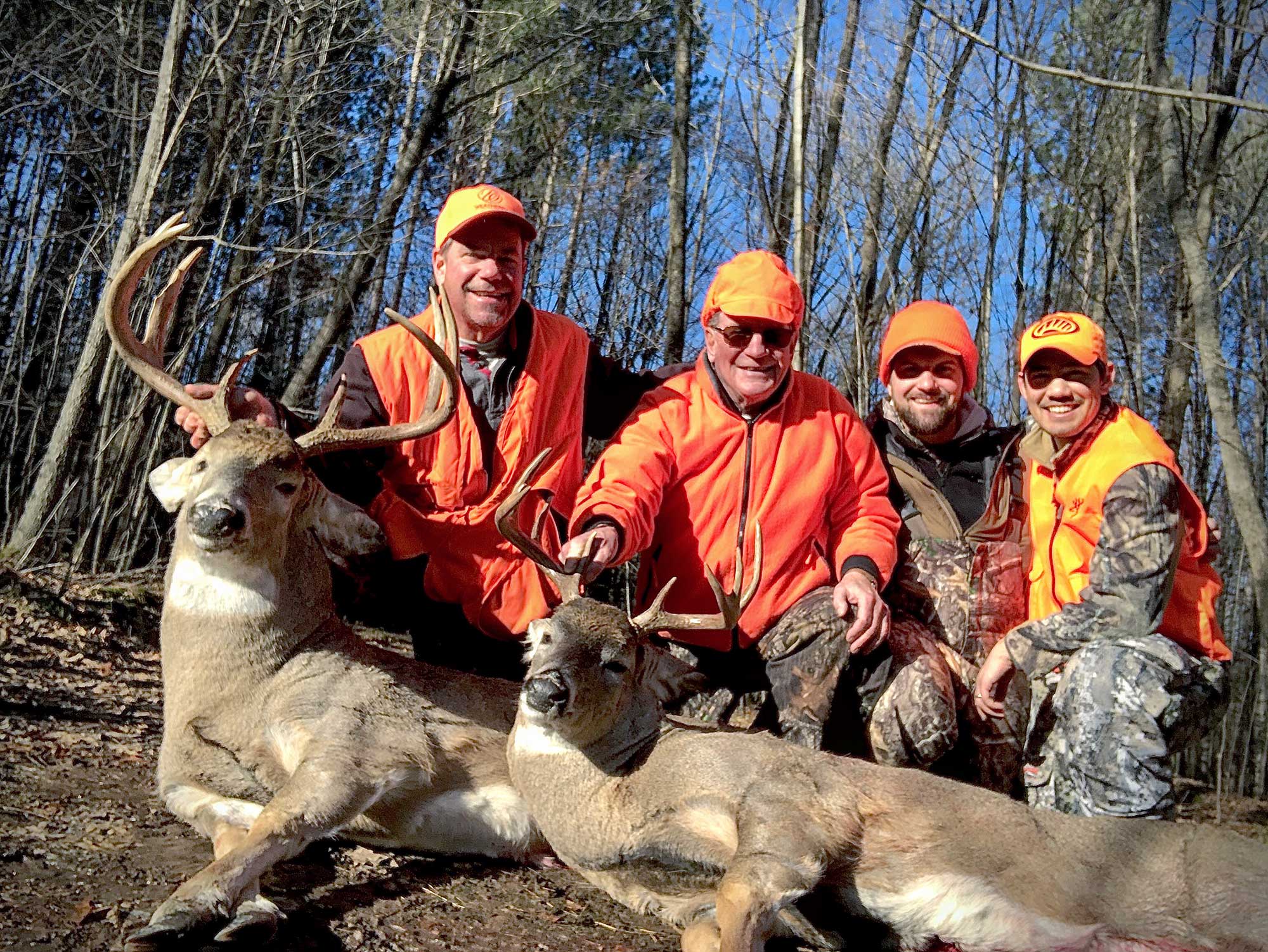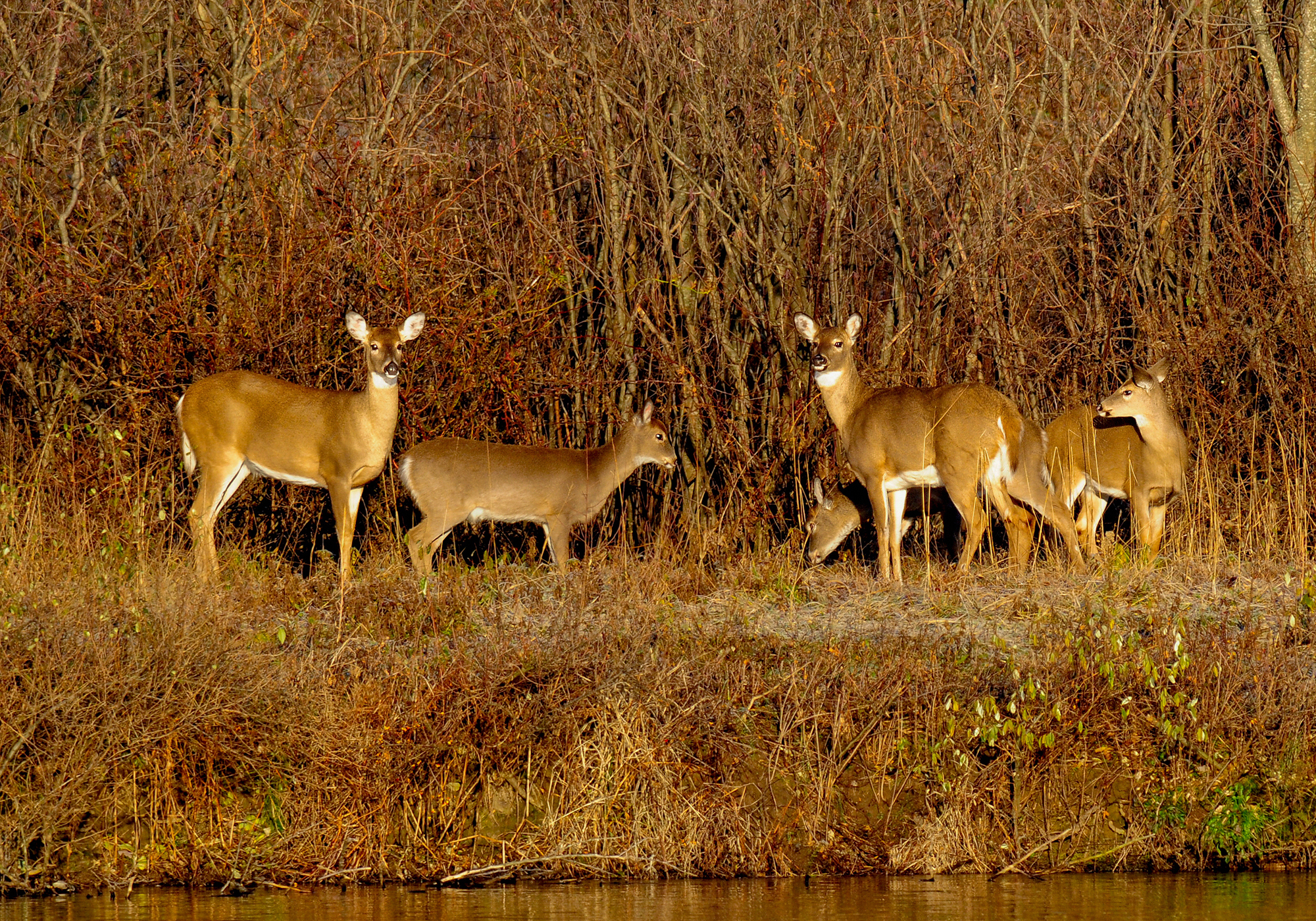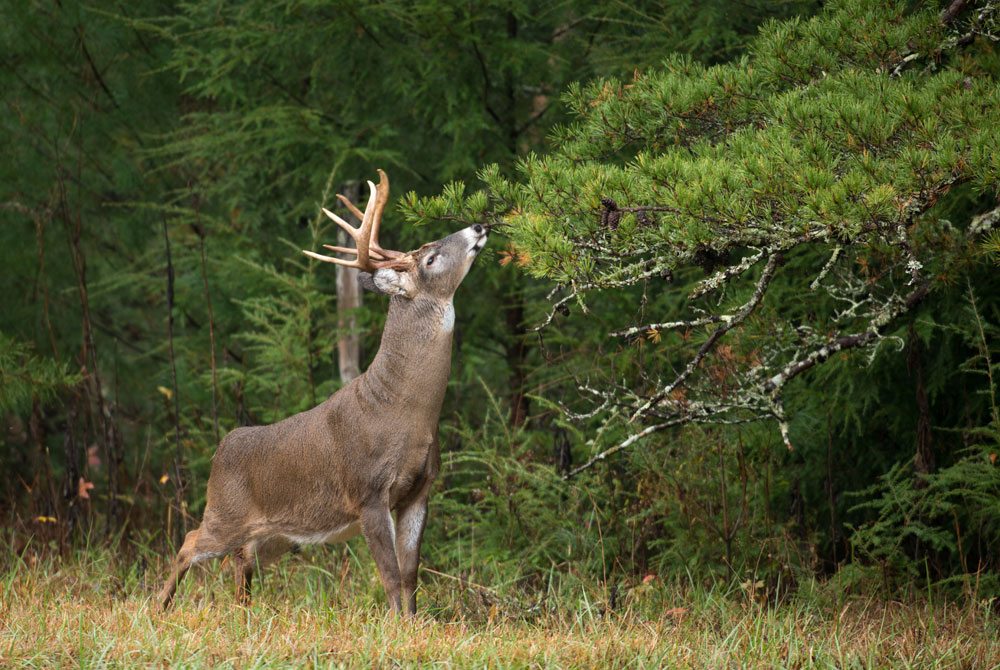What’s the most important piece of deer hunting advice you’ve ever received? I’m guessing it didn’t have anything to do with pre-rut tactics, analyzing moon phases, or developing cellular trail camera strategies. It was probably a lot simpler. Maybe something like: “Stop wiggling so damn much and listen for deer.” The thing is, these little lessons are actually pretty hard to learn. That’s because you have to live them firsthand and even blow a few hunts before they start to sink in. Compile enough of these experiences in the deer woods and, over time, something like wisdom starts to develop. New hunting tactics can be effective, the latest gear and the hottest new guns are fun to obsess over, but it’s wisdom that kills deer.
We polled a hundred experienced deer hunters to mine nuggets of knowledge from their decades in the deer woods. These are the lessons they’ve learned the hard way, so that you don’t have to. —Alex Robinson

Bend at the waist when you’re shooting from a stand so you don’t break form. Not doing so accounts for a heck of a lot of misses. —Kevin Reese
Slow down. Everyone is always in too big of a hurry. Don’t push it. Let things unfold and it will happen. —Ray Eye
Just go! Some of the best hunts I have ever had were during not-so-perfect weather or wind or temperature. —Derek Stromain
Invest in the best. Quality optics will make or break a hunt. —Kevin Steele
Carefully play the wind in pre-rut and post-rut. Go for broke during the rut. —Jeff Johnston
Deer poop about 13 times a day. Conduct an informal population census by walking your property and recording the number of piles found. Multiply the number of days since the leaves dropped (you’ll only find scat deposited since the leaves fell) by 13 and by the approximate size of the property in square miles. Divide that number by the pellet groups you found for a very rough population estimate. —Joseph Albanese
Wool! It’s the best hunting clothing ever. Never get cold. —John Field
Be hopeful. Just because he’s not on your trail cam doesn’t mean he’s not there. —Ernie Calandrelli
Leave a spot alone until the conditions are right. It’s hard not to hunt a field you planted or a stand you labored to build in the off-season, but wind currents are so critical. That first hunt is often your best chance at an old buck. And if you can leave it alone until the rut? That’s even better. —Bobby Cole
Hunt the high ground. I was wisely advised a very long time ago to focus on the upper third of whatever terrain I was hunting. Over the years, this bit of advice has served me well. —Michael Dickerson
Get a ride. Have the farmer, ranch hand, or outfitter drop you off as close to your stand as possible when hunting new land. This prevents unfamiliar sounds and scents, and having to walk around in the dark with a flashlight. I’ve had people drop me literally on the steps of a stand and seen deer as the vehicle left. —Eddie Stevenson
Make some noise. Cast a grunt every so often, especially when you hear something you can’t see. If a squirrel starts barking, a blue jay squawks, or a crow starts fussing, throw a grunt that way. Blind calling pays off big. —Brad Harris
“Don’t shoot unless you know you can kill it” is what my dad always taught us. While the advice sounds simple, there’s a lot of wisdom in it. —Darren Woerner
Watch the weather religiously, and if a big front is moving in with a serious temperature drop, heavy rains or snow, and high winds, get in the woods the day that front is moving in. Or, even better, the afternoon before. —Doug Howlett
Don’t bother with climbing super high. You don’t need to go up 20 feet in a tree. Just find a good hide. Not only will it keep your movement concealed, but it will make for a better shot angle if you’re bowhunting. —Matt Wettish
Never step on anything you can step over. —David Enquist
Make your own trail with a Weed Eater, brush hog, or just knock over the tall weeds with your ATV to lead deer past your stand. Deer follow the path of least resistance. —Brad Rucks
Snort at deer after you spook them. They just might think that you’re another deer. This will relax them and they will soon forget about you if you sit still for a while. —Hal Blood
Trophies aren’t defined by the size of the antlers. They are defined by the memories created and serve as a reminder of those special times. —John Trull
Not all hunting grounds produce giants. Just because you have access to 1,400 acres of dirt doesn’t mean squat. The secret to killing big deer is to hunt where they live. —Chris Ellis
Find what they’re eating, and the rest of it will come together. And be persistent, because you really can’t kill one from the couch. (Read more about what deer eat). —Will Brantley
Deer aren’t scared of blood. So if your management plan (or freezer plan) calls for harvesting does, don’t be afraid to shoot them early on even if you have your heart set on a buck. I have dropped does in their tracks while gun hunting and shot does while bowhunting and later had bucks show up to investigate the downed does (read more about how many does you should shoot). —Jason Hart

Sit all day for the first few days of the rifle season. Here in Michigan, I’ve taken more deer after 10 a.m. than early in the morning. —Denny Guerink
Take a first-timer. Want to make your deer season a little more exciting and recapture some of that wonder from your first few falls? Take out a new hunter and see it all fresh through their eyes. —Alex Robinson
Carry a diaphragm call and make a hen yelp every once in a while if you’re stalking through dry country where it’s impossible to walk quietly. —Mitch Kezar
Pack a pee bottle and make sure to use it. —Gary Garth
Watch the cows. If they are up and moving, so are the deer. If the cows are bedded under a shade tree, so are the deer. This works pretty well on mountain trout too. —George Reid
Make a figure eight when dragging a scent rag, and put your stand in the center. I usually make my drag line about two-thirds of my maximum range, so any deer walking through the area are likely to cross the line and pick up the scent. If they follow the line, I’ll get a shot. —Matt Lindler
Don’t worry about rifle caliber. The rifle that you hunt deer with is much less important than how well you shoot it. —Richard P. Smith
Seeing tails doesn’t count. Seeing deer in their bed or feeding ahead of you, undisturbed, counts! —George Hamilton
Postseason scouting is key. Scout every bit of the land you hunt; crawl into thickets, hike up and down the steepest ridges, go deep into the wet swamp. Leave no section overlooked. You’ll find tidbits of information that can be used next season. —George Hamilton
Read Next: 101 Best Deer Hunting Tips For the Rut
Deer love acorns over just about everything else in the Northwoods. Find an oak ridge near water and you’ve got a recipe for success. —Ace Luciano
Still-hunt with a partner. One follows 100 yards behind the other, slowly. It’s amazing that in thick cover a deer will let the first hunter pass, then circle behind to scent the trail. —Craig Cushman
Walk softly. The snap of a twig underfoot is quickly forgotten by the hunter, but long remembered by the hunted. —Jim Zumbo
Stick to basics. Don’t fall for gimmicks. The only thing that can really prevent you from being scented by deer is the wind blowing in your favor. —Matt Wettish
